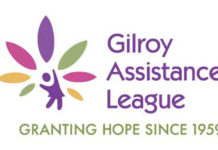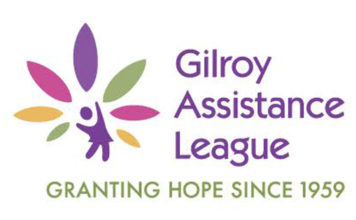Janet Studenski had made a bed countless times in her 53 years,
but she hesitated in front of her classmates.
Janet Studenski had made a bed countless times in her 53 years, but she hesitated in front of her classmates.
This time a student pretending to be a patient was under the covers. The state nursing aide exam was three weeks away, and changing the sheets on an occupied bed was one of 24 skills Studenski needed to master.
At stake were the certification and, with it, a shot at a job.
After more than a year without one, it meant too much to fail.
“Does she turn to her side?” Studenski frowned. “No. Yeah. Turn to your side.”
She worked haltingly. Then, the students behind her giggled, and her shoulders sank: “I definitely wrapped her up in there like a mummy.”
“It’s different,” she said quietly, drifting back to her seat. “You wouldn’t think it would be so hard to make a bed, but it is.”
Since she lost her job as a legal secretary in July 2009, Studenski had been living a life common among the swollen ranks of the unemployed. Every day, uncertainty dragged her down, and hope drove her forward. She felt too old to change careers, but here she was, reinventing herself in a field that promised new challenges and, she hoped, better job prospects.
The recession battered much of the country, casting legions out of work as companies scrambled to cut costs. Now, 1 1/2 years after it officially ended, the national jobless rate has fallen to 9.4 percent. But the economy added just 103,000 jobs, fewer than economists expected.
More troubling still: The number of people out of work a year or longer has grown dramatically, surging to 30 percent of U.S. job seekers last month.
Older job seekers are among the most frightened. Often, they feel disadvantaged when pitted against younger candidates. Some give in to early retirement. Others branch out, seeking jobs in sectors they would not have considered in better times.
Sometimes they succeed in finding work. And occasionally, like Studenski, they find something they never expected: a calling.
Studenski worked as a secretary since high school, when she joined a small manufacturer in Massachusetts. She followed her sister to Florida shortly after, where she took a job in the legal field and met her husband, Frank, at the time an architectural draftsman.
They began a happy, quiet life. They had a son, Eric, and bought a three-bedroom, 1,500-square-foot villa, one of two attached units. When the traffic worsened and back-to-back hurricanes peeled the shingles from their roof, they decided to move to Charlotte in 2005. Like more than 50,000 others that year, they became newcomers to Mecklenburg County.
They knew little about the Charlotte region, but the economy was booming, and they saw the cost of living as far lower than in Florida. For the first time, the Studenskis could afford a single-family home.
“We took a chance,” she said. “(Frank) did the research, and he said, ‘There’s jobs.’ And at the time, there were jobs.”
Within a few months, he found work as an engineering technician for the city of Monroe, N.C. She accepted a job at a large Charlotte law firm, a place with friendly colleagues and a paycheck that would top $50,000 a year.
But by 2009, the recession was in full swing and law firms everywhere were cutting back. Studenski, who worked on the firm’s real estate side, survived one round of layoffs and hoped she was safe.
“But it was so slow in my department,” she said. “You just kind of wondered, because the work wasn’t coming.”
On a Friday in late July 2009, around lunchtime, the secretary who worked next to Studenski came over to her after a meeting. She’d just been laid off, she told her. Studenski’s phone rang a moment later.
She met with the firm’s human resources manager and the attorney in charge of the office. They said they felt awful delivering the news and seemed sincere. They offered her a four-week severance package, and the HR manager even passed along a lead on a new job. Still, it stung. Two decades in the legal industry. Never fired, never even a bad review. And now this.
“At first you’re numb,” she said. “You’re just kind of in shock. It’s so hard to explain.”
By the time the meeting ended, her computer was locked. She spent the afternoon with her secretary friend packing away their work lives.
Her husband was devastated. In his line of work, downsizing was common. But his wife, “she’d done everything she was supposed to. She had an office for five years and brought it all home in five boxes.”
Being at home that first week was strange, but in a way, comforting. The Studenskis’ home, a modest two-story, is dim and calm inside. She favors New Age music and her old yellow Lab, Nala, dozing at her feet. Given the choice, she’d prefer to be at home with her family and animals – there are also three cats and a bird – than behind a desk.
But there were bills, and a son, now 18, who hoped to go away to college. And so, a few days after the layoff, the job search began.
She filed for unemployment benefits and scoured newspapers, online job boards and law firm websites. She picked up part-time legal secretary work, logging 8 to 10 hours a week, and discovered a few openings, mostly for paralegals or receptionists in other industries. Nothing seemed to fit.
She and her family, already frugal, cut back further. They stopped going out to eat, and she stopped shopping for clothes, especially since she no longer needed them for work. They began buying groceries at Wal-Mart. She scaled back her car insurance.
They continued to drive their two Saturns, one of which is paid off, and felt relieved their four-bedroom, 2,000-square-foot home was never more than they could afford.
“We were always thinking, ‘What if? What if?’ And here we go: Here’s the what if,” Studenski said.
And yet they still worried. Between her unemployment – about half of her old paycheck – her part-time job and her husband’s work, they were scraping by. But her $500 a week jobless benefits, extended once, and then again as the months dragged by, would eventually run out.
When her husband read an article in June about some employers passing over candidates who have been out of work too long, he grew angry. And he wondered whether the recession would soon catch up to the government sector, jeopardizing his own job.
Staying employed is “total luck,” he said. “Our numbers could come up even yet.”
As the anniversary of Studenski’s layoff approached, her secretary friend from the old firm mentioned she was going back to school for medical administration. That got Studenski thinking about doing something similar.
The health care field has been one bright spot in a devastating downturn and is expected to deliver still more jobs in the years to come. Nationally, health care has remained one of the few fields to grow during the recession, adding 36,000 jobs in December – more than a third of the total gains, and second only to the leisure and hospitality sector, the U.S. Bureau of Labor Statistics reported Friday.
Browsing job boards, Studenski began to notice numerous openings for certified nursing assistants, who help patients with daily activities from brushing their teeth to bathing to taking walks. It didn’t pay a lot – $9.50 an hour, or less than $20,000 a year, is typical to start – but it was work.
She signed up for a five-week class at the Nurse Aide Institute of Excellence in Charlotte. Her mother fronted the $500 fee.
“So that’s my new thing,” she said on a hot afternoon in early July, a few days before class began. Even then, she wasn’t sold on the idea. She’d expected to cruise to retirement in her old job, and the thought of going back to school was unsettling.
She hadn’t gone to college and worried the work might be too difficult. Her new career would pay less than she brought home on unemployment. And she knew little about nursing.
Class started on a Monday, almost a year after she lost her job. The school, in a rundown shopping center off Sunset Road, seemed a world away from the law firm, which spanned the top five floors in a gleaming high-rise uptown.
Next door were a vacant grocery-store-turned-furniture-liquidator and a coin laundry. Inside were an old coffee pot, rows of desks and a hospital bed with mismatched sheets.
The 20 or so students streaming in that morning chatted busily and dug for their cell phones in oversized handbags. Studenski noted, blushing, that she was the oldest one.
Most of the institute’s students are headed for nursing school, knocking out the aide class as a prerequisite, school owner Ramona Sparrow said. But she said a growing number – about 40 percent – are changing careers, moving from banking or real estate or teaching to a field with more plentiful openings.
“Hopefully, they have an interest in people and want to help them,” she said. “But a lot of it is job stability and obtaining employment.”
As much as 80 percent of the students find jobs shortly after passing their state exam, most within a month, Sparrow said.
On the first day, the students paired up with classmates and introduced each other to the group. As Studenski stood and her partner began talking about her, school co-owner Crystal Parker saw something special.
She caught Studenski – and herself – off guard when she said, “Have you ever thought about working in hospice?”
She had met Studenski once before, and saw her as a humble person with a calm, even voice that puts people at ease.
“You know that old expression, ‘When you see an angel walk in, you see a glow around them’? That was kind of what I saw around her,” Parker said.
A few weeks into class, instructors agreed Studenski was enthusiastic, pleasant and set a good example for her younger classmates. She’d begun to make easy, almost motherly friendships with them.
It was becoming clearer to Studenski, too, that her new endeavor fit. A personality test she took shortly after her layoff advised her to pursue “caregiver” roles; her husband said she’s always the one to step up first to help people.
She considers herself a spiritual person. But she’d never cared for the sick beyond her own family.
Still, she said during a break one August day in class, “It just feels kind of natural.”
Class itself wasn’t so easy. There were lessons from 9 a.m. to 2 p.m. Monday through Thursday and hands-on practice Fridays at an assisted living facility. There were tests every week, too, and she found herself studying at least two hours a night, plus weekends and mornings before class. She got As on every test.
“I feel like my brain is working again,” she said. “Learning something different after all these years of doing the same thing – you don’t know if you can anymore.”
After class ended in August, she checked the computer first thing every morning for job openings. As she’d done for months, she first looked for legal postings, then administrative and clerical roles. Still nothing. And yet plenty of nursing assistant work.
The searches reaffirmed her choice. But they also made her think: What if there were a legal secretary opening? Would the higher pay be enough to turn her away from her new path?
“I’d really have to think about it,” she said. “You know, it’s a Catch-22. I did it for so long, but I never really liked it. Working in the legal field, in my position, was not a very rewarding position.”
She knew that nurses made more money than nursing aides and saw nursing school as a remote possibility in the future. For now, she couldn’t afford it, she said.
Her first choice was still a job in hospice.
But before she could start a new job, she had to pass the state exam.
Studenski was confident about the written portion, less so about the five skills – chosen randomly, out of a possible 24 – she’d have to perform for test administrators.
She set up a practice space in an upstairs bedroom. A single bed with spare sheets, a toothbrush, yellow rubber gloves and a purple smock. She bought a blood-pressure cuff and occasionally convinced her husband or son to stand in as her patient.
The test was at 7:15 a.m. on a Saturday in late August at the Nurse Aide Institute. It wasn’t as bad as she’d feared. The 70 multiple-choice questions were easy enough. One of the five skills tripped her up, taking a pulse, because her volunteer patient had an unusually low one. (Though she was ready for it, changing the sheets was not among the five skills.)
Before she left, the test administrator told her she passed.
She came home to a “congratulations” sign and some candy from her husband.
There was more good news: A nurse from Hospice & Palliative Care Charlotte Region had called the institute to see if instructors could recommend anyone for a job. They suggested Studenski, and soon after, she submitted her application.
Weeks passed. She began to worry about losing her jobless benefits, which were set to run out in early 2011. In September, she took some part-time work with a home health care company, filling in when needed, about 12 hours a week. She needed more work. And her heart was still with hospice, though by early November, she’d nearly lost hope.
She’d kept calling – had they gotten her application? Were there any job openings? – and found herself thinking it wasn’t going to happen.
“And then, out of the blue, they did call me.”
She wore a suit on the day of her interview. She was nervous, wondering how much competition there was and whether, despite the recommendation from her teachers, a candidate with more experience would prevail. But she also knew from her experience that when she made it into an interview, she got the job.
The interview was for a full-time position at the Levine & Dickson Hospice House in Huntersville, N.C., just a few miles from her home. It was a night shift – 7 p.m. to 7 a.m., three days a week – but she didn’t mind; plus, she’d enjoy the four days off.
To her relief, she felt comfortable as she talked with nurse Pam Payne, the night-shift team manager, about her background, her switch to the health care field and her strong desire to help people.
Another nurse gave her a tour of the facility – a good sign, she thought.
In the days that followed, “I was carrying my cell phone to the bathroom,” she said. “I was not going to miss that call.”
It came Nov. 15. She got the job.
Payne sensed Studenski had “a warm, calming effect about her, and that’s what I look for … folks that have that appeal and will appeal to our patients,” she said. “It’s a big step for someone to do that, and she just had this smile about her that I thought our patients would really take to.”
A few days before Christmas, she was still getting used to the night shift, having slept most of the day with a blanket over her head to block the light.
The pay is what she expected, about $10 an hour – a little more than a third of her old salary. But there’s always the chance to pick up a shift when a co-worker can’t make it, and sometime in the future, she plans to pursue a higher-level certification that could bump her pay by 50 percent.
She’s already gotten her new insurance, too, which will save her family $300 a month.
It’s hard work; she cries when patients die and worries for their families. But she’s happy. The hospice house is a warm place, with soft lighting and smiling nurses. The break room was decorated for Christmas that evening, with a tree, cards and sweets leftover from holiday parties, assuring her the employees look out for one another like family.
Studenski has thought a lot about her journey, how strange it was that her instructors knew she’d end up in hospice, how lucky she was that it all worked out. She learned that, despite her fears, she could handle the tests, the unknown. It was actually easy, once she realized how much she liked the work. She encourages anyone else in her position to take a chance, too.
“Don’t think that you can’t do it, because if I can do it, others can do it, too,” she said.
Her mother said initially of her new job, “Are you sure? You know what hospice is?” Her friends tell her they could never do what she’s doing.
But Studenski feels a sense of peace she could never quite achieve in her old career.
“I know this sounds corny, but I feel like I was chosen to do a really special job,” she said. “To think that I’m the one that’s going to be with people at the end of their life – I’m going to be the one to try to comfort them – that’s an important job.”
And then she’s off, down the hallway and into the lives of new patients. To work, for the first time in a long time.














